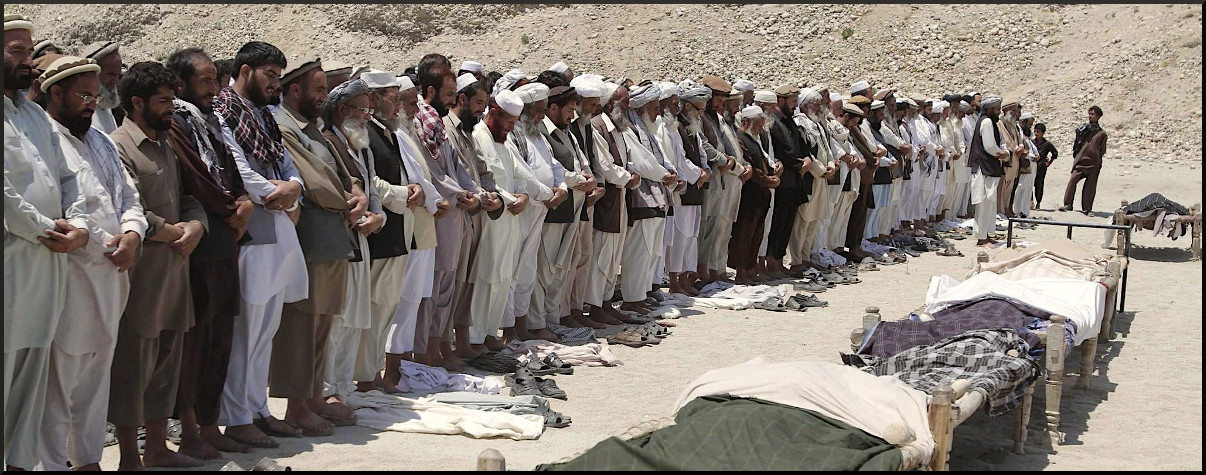by Manlio Dinucci, published on Global Research, July 10, 2020
Bankruptcy budget for the USA also from a political-military point of view: most of the territory is now controlled by the Taliban or disputed between them and the Governmental Forces supported by NATO.
After lengthy negotiations, the Trump administration concluded an agreement with the Taliban last February against this background, which provides for the reduction of the number of US troops in Afghanistan from 8,600 to 4,500 in exchange for a series of guarantees. This does not mean the end of the US military intervention in Afghanistan, which continues with Special Forces, drones and bombers.
The deal, however, would pave the way for a de-escalation of the armed conflict. A few months after signing, however, the agreement was broken: not by Afghan Taliban but by US Democrats.
They passed an amendment to the National Defense Authorization Act in Congress that allocates $740.5 billion for the Pentagon’s fiscal year budget in 2021. The amendment, approved on July 2 by the House Armed Services Committee by a large majority with Democrats’ votes establishes to “limit the use of funds to reduce the number of armed forces deployed in Afghanistan.” It forbids the Pentagon to spend the funds in its possession for any activity that reduces the number of US soldiers in Afghanistan below 8,000: the agreement involving the US troops’ reduction in Afghanistan is thus effectively blocked.
It is significant that the amendment was sponsored not only by Democrat Jason Crow but also by Republican Liz Cheney, who provides her endorsement in perfect bipartisan style. Liz is Dick Cheney’s daughter. Her father was United States vice president from 2001 to 2009 in the George W. Bush Administration, the administration that decided on the invasion and occupation of Afghanistan (officially to hunt down Osama bin Laden).
The amendment explicitly condemns the agreement, arguing that it harms “the United States National Security interests,” “does not represent a realistic diplomatic solution” and “does not provide protection for vulnerable populations.” In order to be authorized to reduce its troops in Afghanistan, the Pentagon will have to certify that this “will not compromise the United States’ counter-terrorism mission.”
It is no coincidence that the New York Times published an article on June 26 that according to information provided (without any evidence) by US intelligence agents, accuses “a Russian military intelligence unit of offering Taliban militants a size to kill Coalition soldiers in Afghanistan, targeting mainly American ones.” The news was spread by major US media, without any fake news hunter questioning its veracity.
A week later, the amendment that prevents the reduction of US troops in Afghanistan passed. This confirms what the real purpose of the US / NATO military intervention in Afghanistan is: control of this area is of primary strategic importance.
Afghanistan is at the crossroads of the Middle East and Central, Southern and Eastern Asia. In this area (the Gulf and the Caspian sea) there are large oil reserves. There are also Russia and China, whose strength is growing and affecting global structures.
As the Pentagon warned in a report on September 30, 2001, a week before the US invasion of Afghanistan, “there is a possibility that a rival with a formidable resource base will emerge in Asia.” Possibility that is now materializing. The “National Security interests of the United States” require us to stay in Afghanistan no matter what it costs.
*Featured Image: Burying civilians in Afghanistan. (Ariana News)
Manlio Dinucci is a geographer and journalist. He has a weekly column “The Art of War” in the Italian daily il manifesto. Among his latest books: Geocommunity (in three volumes) Ed. Zanichelli 2013; Geolaboratorio, Ed. Zanichelli 2014; Se dici guerra…, Ed. Kappa Vu 2014
